Harishyam Arts Blog
Which Direction Should We Face While Worshipping
By Lakshay Sharma | On 24 June, 2024 | Views
When entering a Mandir (temple) to offer prayers and seek blessings, one often comes across the practice of facing a specific direction while engaging in worship. This age-old tradition holds profound significance in Hindu culture and spirituality. Understanding the rationale behind this directional focus and adhering to it can enhance your spiritual experience. In this comprehensive guide, we delve into the intricacies of the direction you should face in a Mandir while worshipping, shedding light on its historical, spiritual, and practical aspects.
Which direction should I face when praying?
In the sacred realm of a Mandir, the direction you face during worship holds immense importance. This practice aligns with the principles of Vastu Shastra, the ancient Indian architectural science that governs spatial arrangements. According to Vastu Shastra, each direction is associated with specific energies and deities. The main directions, also known as the cardinal directions, are North, East, South, and West. Here's an exploration of the significance of each direction:
East: The Abode of the Rising Sun
Facing the East direction while worshipping is considered highly auspicious. The East is associated with the rising sun, symbolizing the emergence of positivity, enlightenment, and new beginnings. When you face East in a Mandir, you align yourself with these positive energies, facilitating spiritual growth and mental clarity.
West: Embracing Transformation
Worshipping while facing the West direction signifies embracing transformation and change. The West is connected to the setting sun, symbolizing the end of the day. This direction encourages devotees to let go of negativity, ego, and attachments, paving the way for inner transformation and self-improvement.
North: The Realm of Prosperity
Facing the North direction during worship is believed to attract prosperity and abundance. This direction is associated with Kubera, the deity of wealth. By aligning with the North, devotees seek blessings for financial well-being, success, and overall material prosperity.
South: Nurturing Spiritual Strength
The South direction holds a unique place in Hindu tradition as it is associated with Lord Yama, the god of death. Worshipping while facing South is seen as an act of seeking protection and spiritual strength. It reminds devotees of the impermanence of life and the importance of cultivating inner resilience.
Importance of Directional Alignment
The practice of facing a specific direction in a Mandir while worshipping goes beyond architectural guidelines; it has deep spiritual and cosmic implications. This alignment is believed to create a harmonious resonance between the individual's energy and the cosmic energies associated with that direction. When you face the right direction, you are in tune with the cosmic flow, enhancing the efficacy of your prayers and meditation.
FAQs Related to Which direction should Worshipper face?
Q.1 Is it necessary to follow the directional guidelines in every Mandir?
Ans: While many Mandirs provide directional cues, the key is to respect and adhere to the practices of the specific temple you are visiting. It's a way of embracing the temple's traditions and energies.
Q.2 Can I still pray effectively if I don't know the exact direction?
Ans: Absolutely. While facing the recommended direction enhances your connection with cosmic energies, your intention and devotion matter most. Focus on your inner spirituality and connection with the divine.
Q.3 What if I am unable to physically face the recommended direction?
Ans: Intentions and mental alignment hold immense power. Even if physical constraints prevent you from facing a certain direction, your sincere devotion is what truly counts.
Q.4 Are the directional guidelines the same for all types of worship?
Ans: Different deities and practices may have specific directional preferences. It's advisable to learn about the deity you are worshipping and follow the guidelines accordingly.
Q.5 Can I apply the concept of directional alignment at home?
Ans: Yes, you can. Aligning your personal meditation or prayer space with a specific direction can enhance the energy of the space and your spiritual practice.
Q.6 What if the temple's layout doesn't allow me to face the desired direction?
Ans: Temples are built with architectural and energy principles in mind. Trust that the temple's layout has been designed to maximize the spiritual experience, even if you can't directly face the desired direction.
Q.7 In which direction should we not worship?
Ans: According to traditional Vastu Shastra principles, worshippers are generally advised not to face the south direction while praying. South is often considered the direction of Yama, the deity of death, and it is believed that facing this direction during worship can have negative implications. However, the specific guidelines may vary based on regional traditions and personal beliefs. The most important aspect of worship is your devotion and sincerity, so focus on your spiritual connection regardless of the direction.
Q.8 Which direction should God face in the home?
Ans: In a home, it is generally recommended that deities should face the east direction in the pooja room. This allows worshippers to face west while praying, which is considered auspicious. If east-facing placement is not possible, the next best direction is north. These directions are believed to enhance the spiritual energies and create a harmonious environment for worship.
For more detailed information, read our complete blog on "Which Direction Should God Face in Pooja Room?"
Conclusion: Which way should we face for puja?
At Harishyam Arts, we believe that the direction you face while worshipping in a Mandir is deeply rooted in spiritual wisdom and tradition. Aligning your energy with the cosmic energies associated with different directions can enhance your spiritual experience. Facing East symbolizes new beginnings, West represents transformation, North brings prosperity, and South offers inner strength.
Ultimately, your sincere devotion and intention are the most powerful aspects of your spiritual journey. When you visit a Mandir or set up your pooja room, take a moment to align yourself with the direction that best resonates with your spiritual goals and aspirations.
When entering a Mandir (temple) to offer prayers and seek blessings, one often comes across the practice of facing a specific direction while engaging in worship. This age-old tradition holds profound significance in Hindu culture and spirituality. Understanding the rationale behind this directional focus and adhering to it can enhance...

Lakshay Sharma
I’m Lakshay Sharma, a writer with a deep passion for Hindu mythology, Vastu Shastra, and home interiors. I enjoy exploring the rich traditions of Hindu gods and goddesses, sharing insights into Vastu principles, and offering guidance on creating sacred spaces like Puja Mandirs. Through my writing, I aim to inspire harmony and spiritual well-being, blending traditional knowledge with modern perspectives.
Harishyam Arts | Jaipur
Related Blogs

Is It Okay to Hang a Mandir on a Wall? A Complete Guide to Wall-Mounted Temples
Lakshay Sharma | November 23, 2025
In today’s fast-paced world, where urban homes are becoming more compact and s...
Read More...
Who is Parashvanath? The Life and Legacy of Jainism’s 23rd Tirthankara
Lakshay Sharma | November 22, 2025
Faith and spirituality are cornerstones of Indian tradition, and Jainism stand...
Read More...
How to Choose Between Carved and Minimalistic Wooden Mandirs
Lakshay Sharma | November 21, 2025
A home mandir (temple) is far more than just a piece of furniture; it is the s...
Read More...
How to clean silver god idols at home
Lakshay Sharma | November 21, 2025
At Harishyam Arts, we understand the spiritual and aesthetic significance of s...
Read More...
Are Marble Dust Statues Ideal for Your Home Temple? Pros & Cons
Lakshay Sharma | November 19, 2025
When it comes to selecting statues for your home temple, marble dust statues h...
Read More...
Where to Buy Authentic Marble Gods' Moortis in the USA: A Guide for Devotees and Collectors
Lakshay Sharma | November 19, 2025
For devotees and collectors in the USA seeking authentic marble Hindu god moor...
Read More...
Maa Parvati 108 Names in Sanskrit and English: Their Significance, Meaning, and Mantra Power
Lakshay Sharma | November 17, 2025
The Divine Essence of Maa Parvati
Maa Parvati,...
Read More...
8 Guidelines for Setting Up Your Home Mandir with Wooden Murtis: Location, Selection, and Maintenance.
Lakshay Sharma | November 16, 2025
Introduction: The Divine Mother of Strength and Compassion

Who Was Jain Mahavir? The Life, Teachings, and Legacy of the 24th Tirthankara
Lakshay Sharma | November 15, 2025
Lord Mahavir, the 24th Tirthankara of Jainism, was a spiritual reformer who re...
Read More...
Benefits of Choosing Corian Mandirs Over Marble and Wood
Lakshay Sharma | November 14, 2025
Modern homes today demand elegance, functionality, and easy upkeep — and Coria...
Read More...
White vs. Black Shivling: Which One Is Best for Your Home and Why?
Lakshay Sharma | November 13, 2025
The Shivling, a sacred symbol of Lord Shiva, embodies creation, power, and pur...
Read More...
10 Stunning Marble Handicraft Pieces to Elevate Your Home Décor
Lakshay Sharma | November 12, 2025
Marble handicrafts represent timeless artistry, luxury, and devotion. At Haris...
Read More...
Brass Ganesha Idols as Gifts: Symbolism, Occasions, and Gifting Etiquette
Lakshay Sharma | November 11, 2025
Gifting a brass Ganesha idol is more than a gesture—it's a blessing of prosper...
Read More...
Luxury Kids Room Decor Ideas That Turn Every Space Into a Fairytale Dream
Lakshay Sharma | November 10, 2025
Transforming a child’s room into a luxury fairytale dream combines comfort wit...
Read More...
Why Repainting Your Marble Statue Can Extend Its Life and Beauty
Lakshay Sharma | November 09, 2025
Marble statues are elegant pieces of art that add charm to any home or temple....
Read More...
How to Choose the Perfect Wall-Mounted Wooden Mandir for Your Home
Lakshay Sharma | November 08, 2025
A wall-mounted wooden mandir is more than just a spiritual corner; it’s a blen...
Read More...
Understanding GST on Marble God Statues: A Complete Guide for Buyers and Sellers
Lakshay Sharma | November 07, 2025
Marble god statues are a popular choice for temples, homes, and offices due to...
Read More...
Are Wooden Statues Pest-Resistant? How to Protect Your Wooden Idols from Insects and Damage
Lakshay Sharma | November 06, 2025
Wooden statues have been cherished for centuries due to their natural beauty a...
Read More...
Corian vs Wooden Temples: Which One Should You Choose?
Lakshay Sharma | November 05, 2025
Choosing the perfect temple for your home is more than just selecting a design...
Read More...
How Customised Marble Human Bust Manufacturers Bring Personalities to Life
Lakshay Sharma | November 04, 2025
Crafting a marble human bust is so much more than sculpting a likeness—it's ab...
Read More...
The Power of the Hare Krishna Maha Mantra: Awakening Spiritual Bliss
Lakshay Sharma | November 03, 2025
The Hare Krishna Maha Mantra is a sacred chant that ...
Read More...
The 24 Tirthankaras of Jainism: Names, Symbols, and Significance
Lakshay Sharma | November 02, 2025
In Jainism, the Tirthankaras are revered as divine s...
Read More...
Top 25 Space-Saving Wooden Mandir Ideas for Modern Homes
Lakshay Sharma | November 01, 2025
A pooja mandir is the heart of every Indian home — a sacred corner where peace...
Read More...
What Are the 8 Forms of Lakshmi? | Ashta Lakshmi Meaning and Significance
Lakshay Sharma | October 31, 2025
The Divine Essence of Goddess Lakshmi
Goddess La...
Read More...
The Art of Craftsmanship: How Handmade Brass Statues Are Created
Lakshay Sharma | October 30, 2025
At Harishyam Arts, we celebrate the timeless beauty ...
Read More...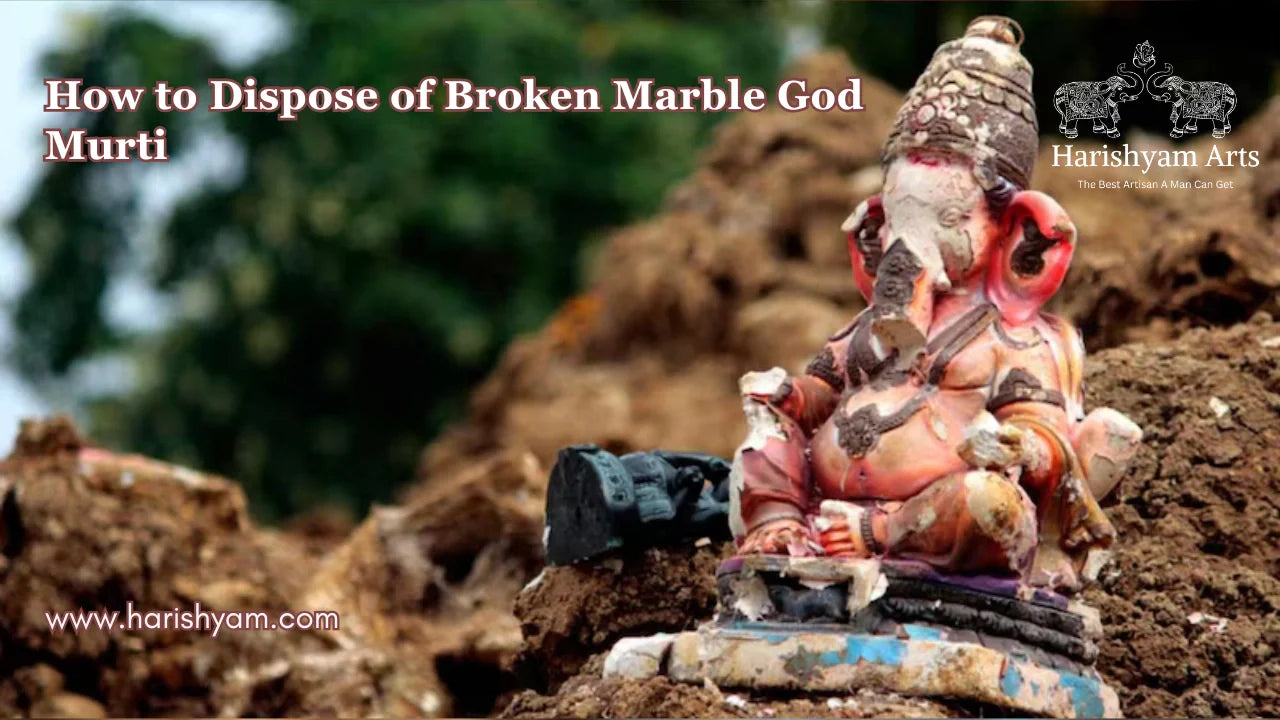
How to Dispose of Broken Marble God Murti
Lakshay Sharma | October 30, 2025
In Hindu tradition, marble murtis represent divine presence and spiritual ener...
Read More...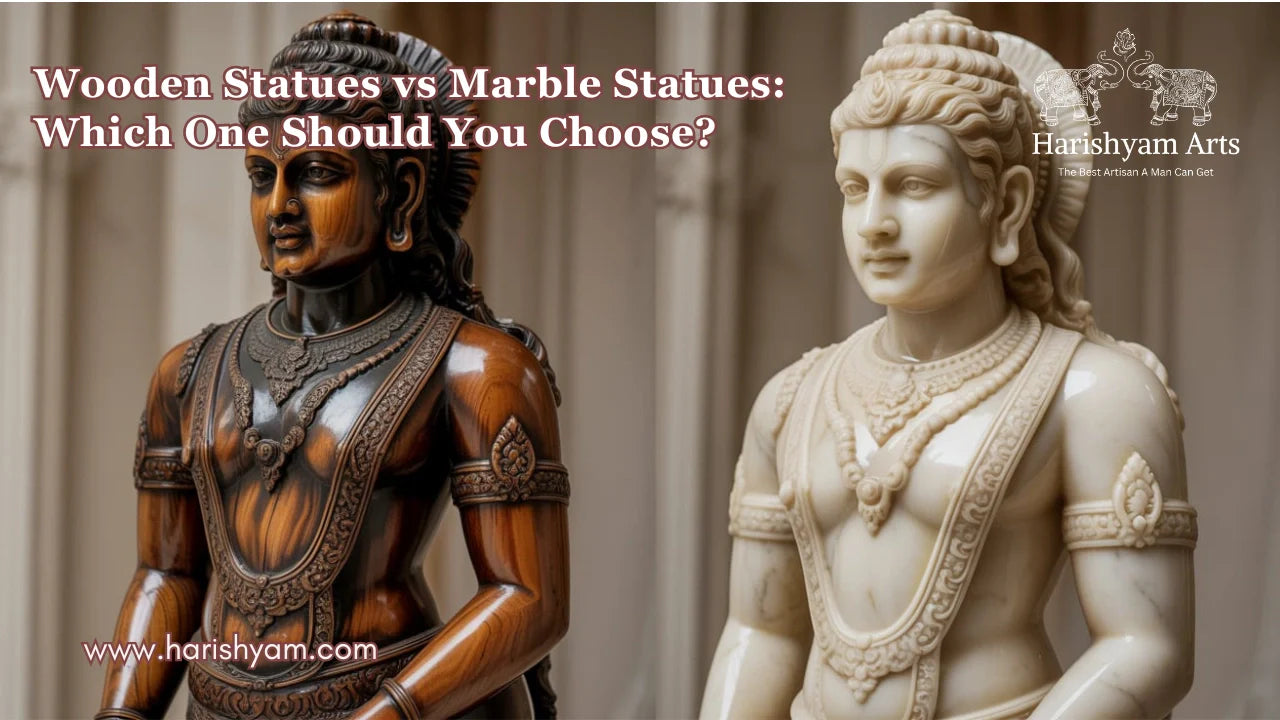
Wooden Statues vs Marble Statues: Which One Should You Choose?
Lakshay Sharma | October 29, 2025
When it comes to decorating your home or creating a sacred space, choosing the...
Read More...
How a Wooden Temple Enhances Positive Energy in Your Home
Lakshay Sharma | October 28, 2025
A home temple isn’t just a decorative corner — it’s the spiritual...
Read More...
Why Lord Krishna is Worshipped in Different Forms Across India
Lakshay Sharma | October 27, 2025
Lord Krishna — the eighth incarnation of Lord Vishnu — is one of the most belo...
Read More...
The Story of Goddess Saraswati: The Embodiment of Wisdom and Knowledge
Lakshay Sharma | October 26, 2025
Among the many deities of the Hindu pantheon, Maa Saraswati Read More...

Top Reasons to Choose Brass Statues for Home Décor and Spiritual Spaces
Lakshay Sharma | October 25, 2025
Home décor today is not only about beauty—it’s about creating a peaceful and m...
Read More...
How long do Corian temples last?
Lakshay Sharma | October 24, 2025
Choosing the right material for a temple at home is important for both aesthet...
Read More...
Why Lord Shiva is Called the Mahadeva – The Supreme God
Lakshay Sharma | October 23, 2025
Hinduism, one of the world’s oldest religions, has a rich pantheon of deities,...
Read More...
Why Corian Temples Are Becoming Popular in Contemporary Homes
Lakshay Sharma | October 22, 2025
In today’s modern homes, interior décor blends tradition with contemporary sty...
Read More...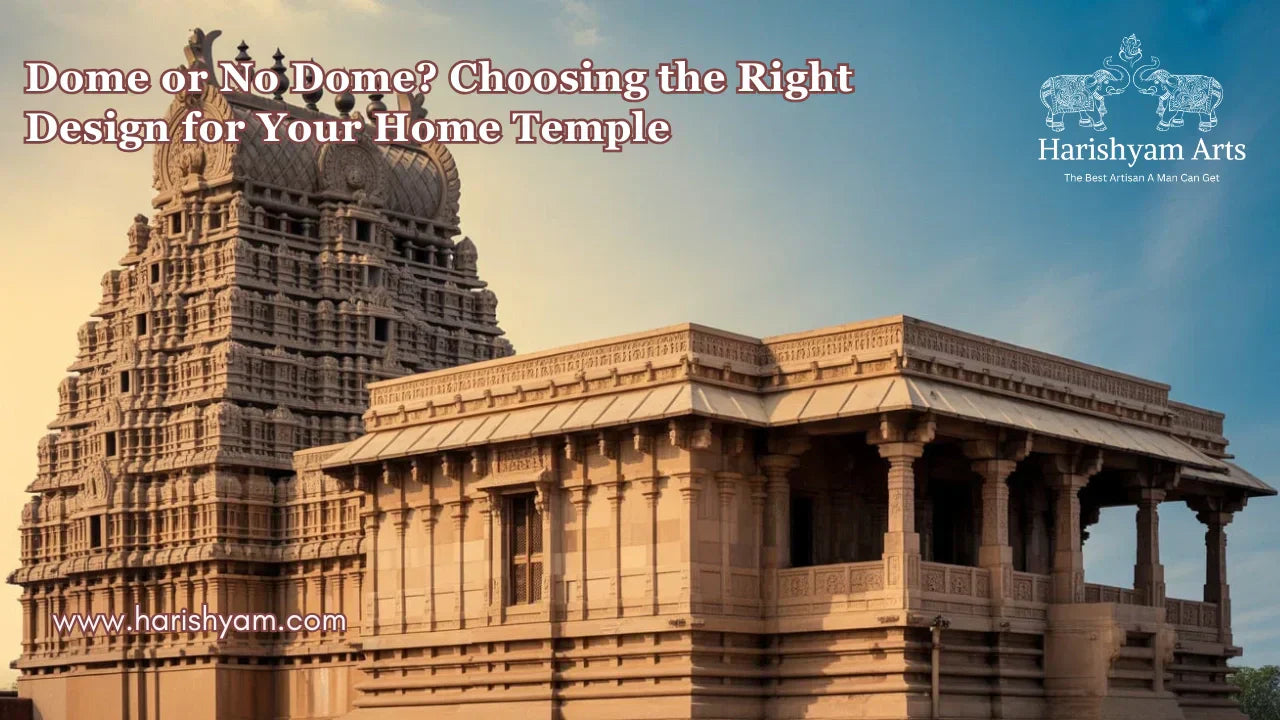
Dome or No Dome? Choosing the Right Design for Your Home Temple
Lakshay Sharma | October 21, 2025
Creating a sacred space at home is a spiritual investment, and the design of y...
Read More...
Traditional vs Modern Wooden Temples: Which Suits Your Space?
Lakshay Sharma | October 20, 2025
Creating a sacred space in your home is more than just interior décor — it’s a...
Read More...
Top Marble Types for Pooja Mandirs: A Complete Buyer’s Guide
Lakshay Sharma | October 19, 2025
A Pooja Mandir is more than just furniture; it is th...
Read More...
The Different Forms of Shiva Statues and their Symbolism
Lakshay Sharma | October 18, 2025
Introduction to the God Shiva Statue
Lord Shiv...
Read More...
Guide to Choosing the Perfect Wooden Statue for Home and Office Décor
Lakshay Sharma | October 17, 2025
Wooden statues are more than decorative pieces—they are timeless symbols of ar...
Read More...
Understanding the Difference Between Handmade and Machine-Made Brass Statues
Lakshay Sharma | October 16, 2025
Brass statues have been a cornerstone of spiritual and decorative art for cent...
Read More...
Where to Buy Custom Marble Statue Online? A Complete Guide
Lakshay Sharma | October 15, 2025
Marble statues have always held a special place in Indian homes and temples. T...
Read More...
Mistakes You Shouldn’t Make When Purchasing a Home Temple Online
Lakshay Sharma | October 14, 2025
Buying a home temple online can be an exciting experience — especially with so...
Read More...
Mistakes You Shouldn’t Make When Purchasing a Home Temple Online
Lakshay Sharma | October 14, 2025
Buying a home temple online can be an exciting experience — especially with so...
Read More...
How to Clean and Maintain Wooden Statues at Home
Lakshay Sharma | October 13, 2025
Wooden statues add elegance, tradition, and warmth to any home. From intricate...
Read More...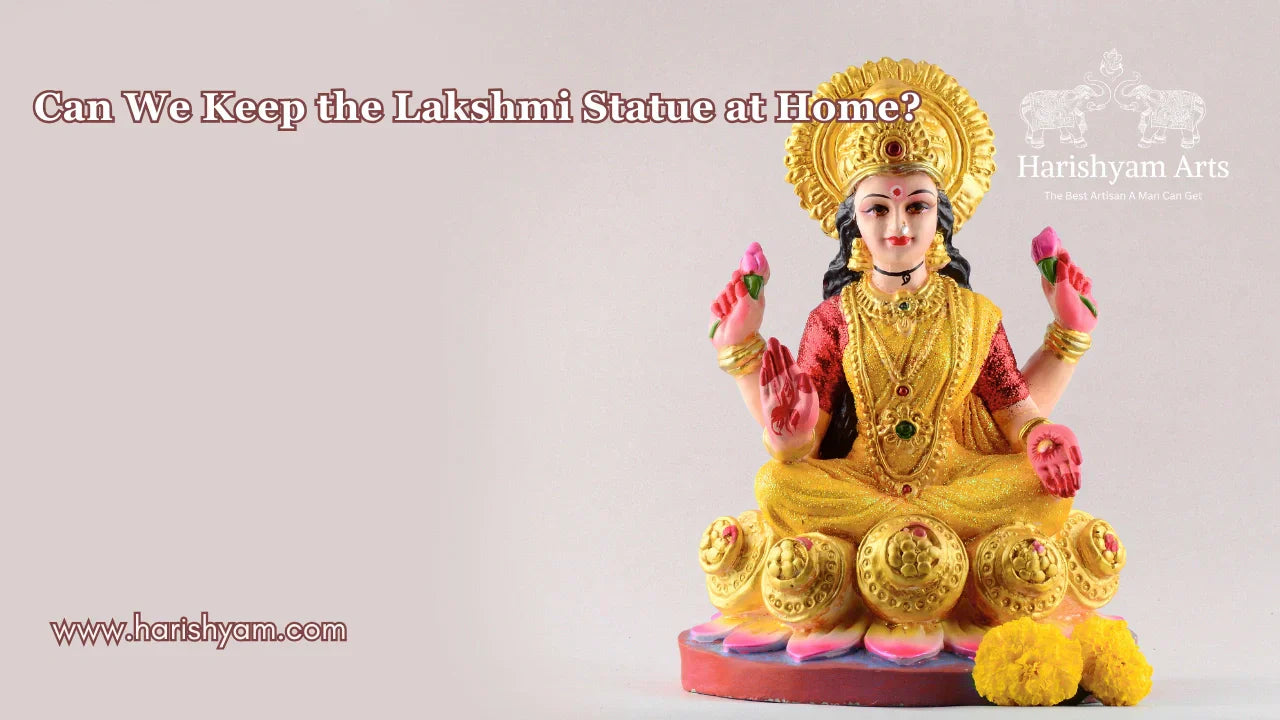
Can We Keep the Lakshmi Statue at Home?
Lakshay Sharma | October 13, 2025
In Hindu tradition, Goddess Lakshmi is worshipped as the divine force of wealt...
Read More...
How to Clean Brass Statues at Home?
Lakshay Sharma | October 12, 2025
Brass statues add a touch of elegance and spirituality to any home. At Harishy...
Read More...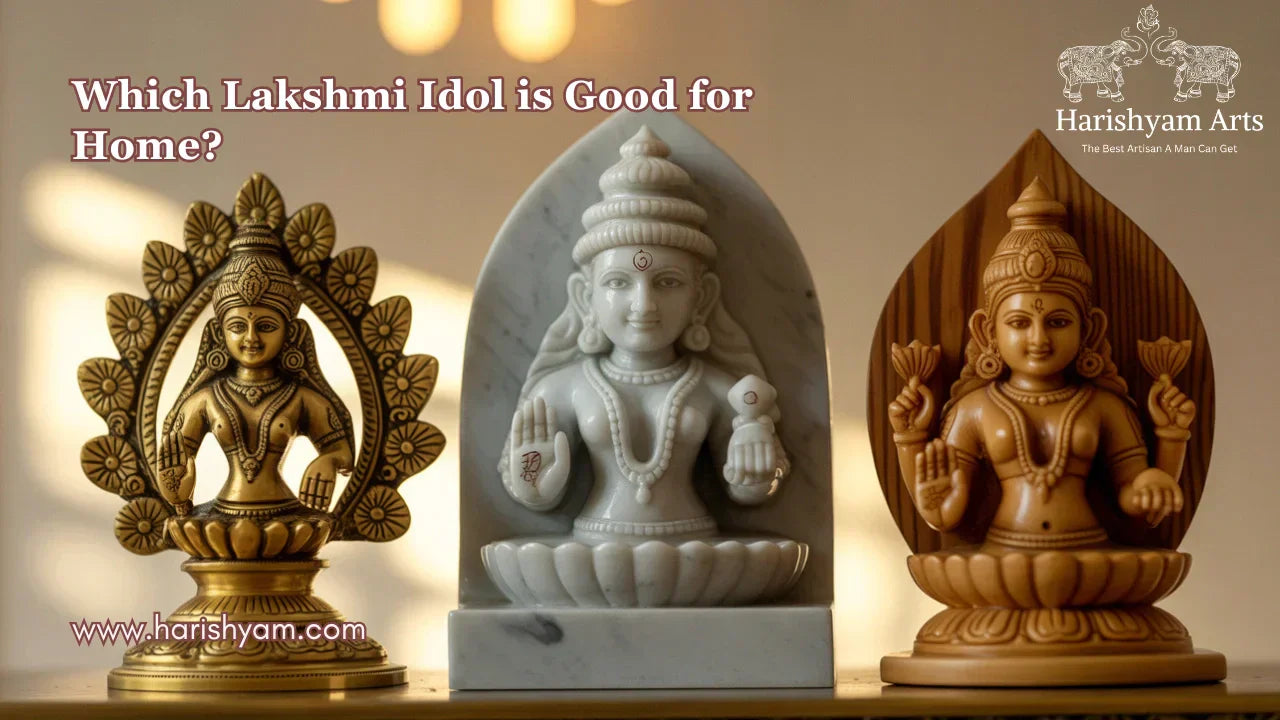
Which Lakshmi Idol is Good for Home? Types, Materials, and Significance
Lakshay Sharma | October 11, 2025
Goddess Lakshmi, the divine symbol of wealth, prosperity, and abu...
Read More...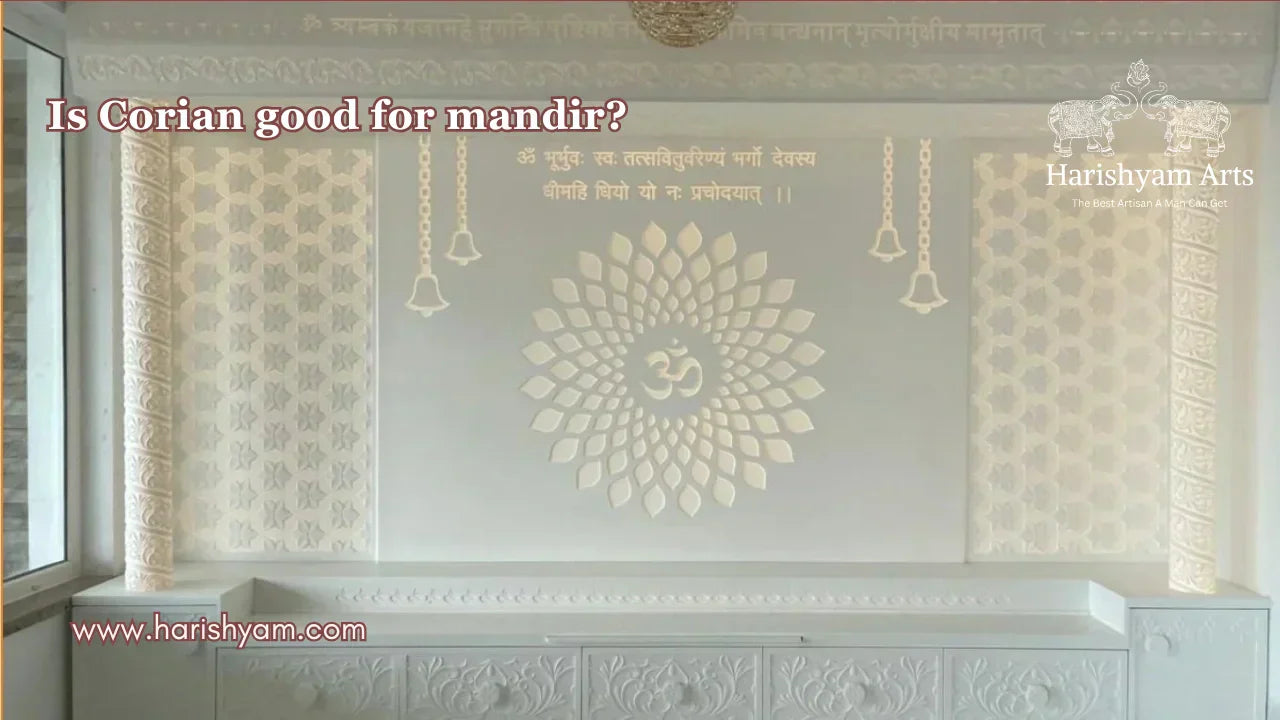
Is Corian Good for Mandir? A Complete Guide
Lakshay Sharma | October 10, 2025
When it comes to designing a home mandir, choosing t...
Read More...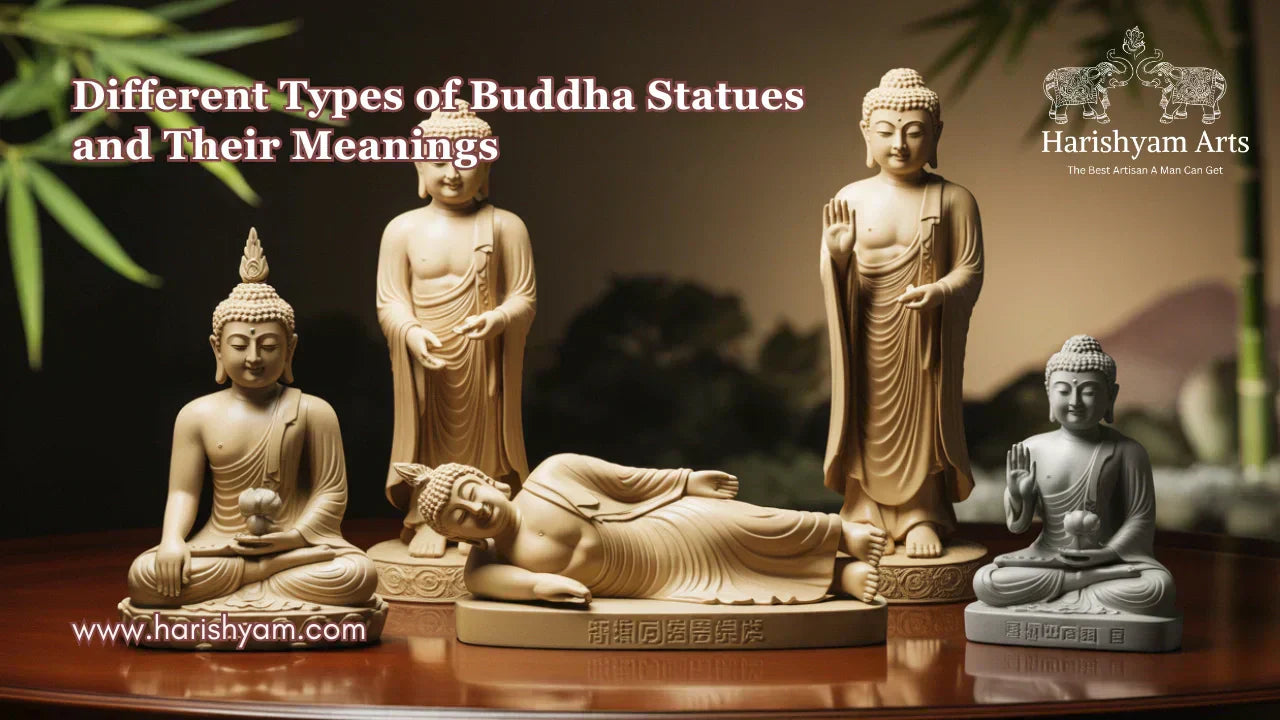
Different Types of Buddha Statues and Their Meanings
Lakshay Sharma | October 09, 2025
Buddha statues are more than just beautiful decorative pieces—they symbolize s...
Read More...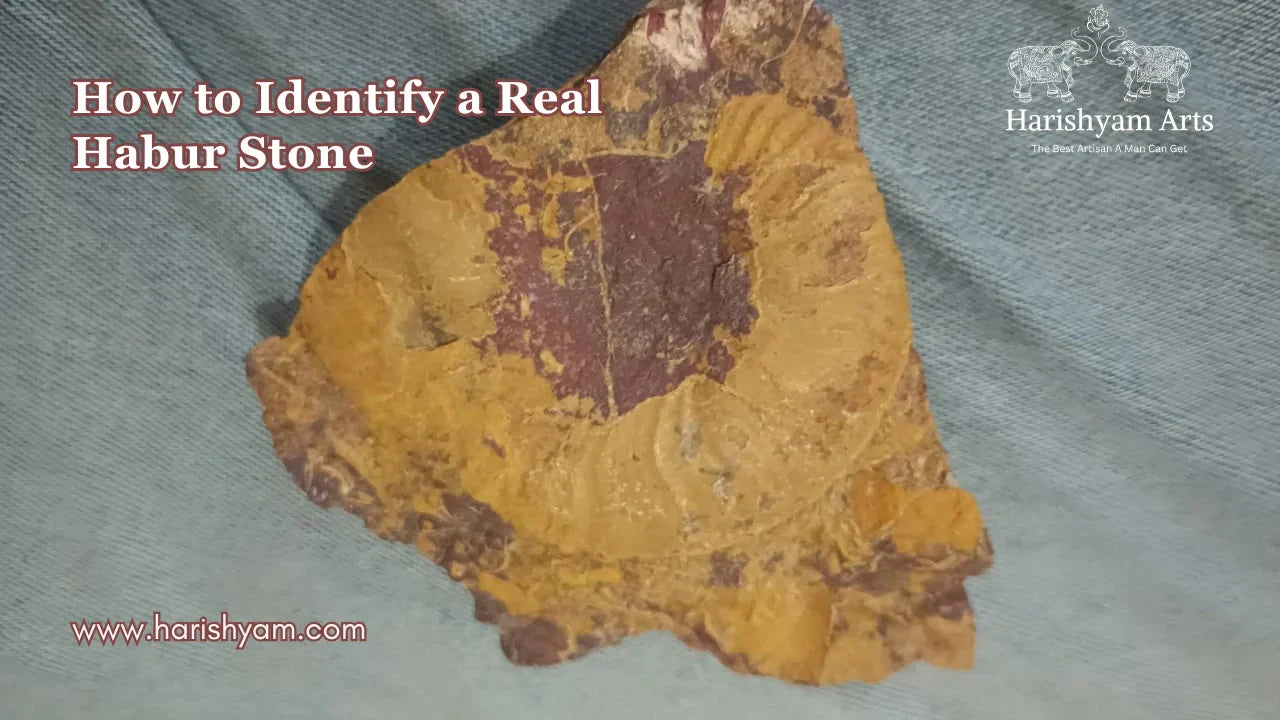
How to Identify a Real Habur Stone? A Complete Guide
Lakshay Sharma | October 08, 2025
Habur stone, known for its mysterious ability to turn milk into curd naturally...
Read More...



